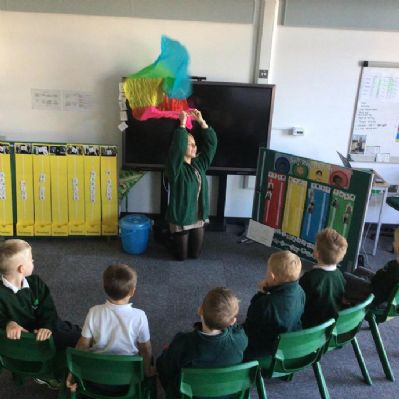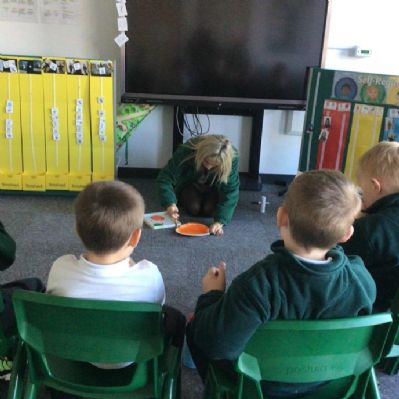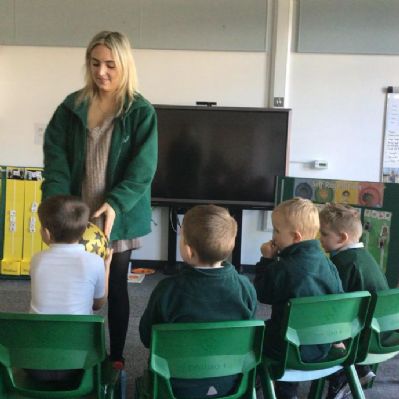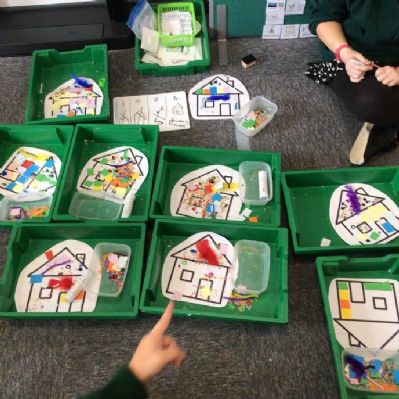Attention Autism 'Bucket Time'
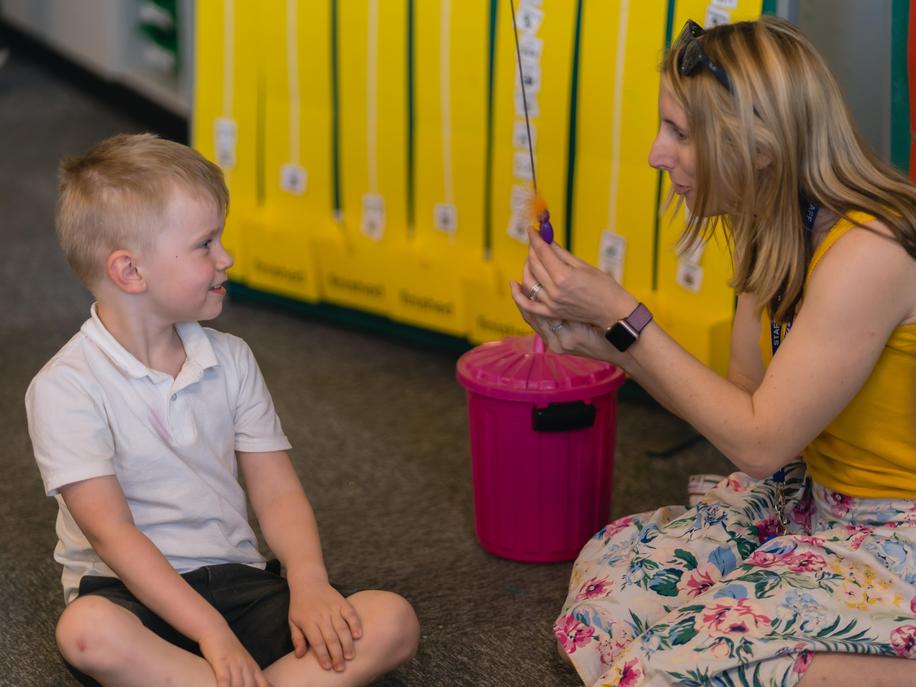
At Aspire we use an approach called 'Attention Autism'. This helps to develop natural and spontaneous communication skills in Autistic children through the use of visually based and highly motivating activities. The approach was developed by Speech and Language Therapist, Gina Davies.
The main aims of Attention Autism are:
- To engage attention
- To improve joint attention
- To develop shared enjoyment in group activities
- To increase attention in adult-led activities
- To encourage spontaneous interaction in a natural group setting
- To increase non-verbal and verbal communication through commenting
- To build a wealth and depth of vocabulary
- To have fun!
Stages of Attention Autism
The Attention Autism programme progresses through a series of stages, building on each skill level.
Stage 1: The Bucket to Focus Attention
A bucket or any container with a lid is filled with visually engaging objects and toys, aiming to gain the shared attention of the group. At Aspire we have differentiated the containers we use so in Reception and KS1 we have a bucket, Year 3 have a treasure chest, Year 4 have a lego brick and Year 5 have a large lego container. The adult leader shows three items to the group and uses simple repetitive vocabulary to comment on the various objects. It is so important that the children are not allowed the toys they are only allowed to LOOK at the toys!
Stage 2: The Attention Builder
The attention builder is a visually stimulating activity which is shown to the group by the adult leader, aiming to sustain attention for a longer period. The activities are fun, visually engaging and can often involve lots of mess. Again at this stage the children are not to take part they are to watch the adult who is leading the session. Some activities which we do at this stage are:
- Exploding Lemonade
- Spinning Paint
- Paint Splat
- Glitter Splat
- Blowing up balloons
Stage 3: Turn taking & Re-engaging Attention
The adult leader demonstrates a simple game which is modelled with another adult in the group. Some children are then invited to have a turn, but only if they are comfortable to do so. Not every child in the group will get a turn, which then teaches important emotional regulation skills, as well as the essential skills of waiting, turn-taking and learning through modelling. In stage 3 a song is always sung with the children to get them motivated also the children are encouraged to move at this stage as they have been sitting for a long time. Some activities and songs which we sing at this stage are:
'We are spinning on the chair.'
'We are standing on the stool.'
'Run, run don't day dream, catch an ice cream.'
'I am sleeping in the bed.'
The children love this stage! When a child does not get a turn it is really important to plant a seed in their head by saying. 'I didn't get a turn this time, but maybe tomorrow!' This helps the children accept that they didn't get a turn but they may get a turn tomorrow!
Stage 4: Shifting & Re-engaging Attention
Stage 4 aims to develop the skill of engaging and shifting attention. The adult leader demonstrates a simple creative task, and then gives each child an individual kit to copy the task. The children take their kits to a table, complete the task independently, and then everyone returns to the group to show their completed tasks. Some examples of stage 4 activities are:
- Cotton wool painting
- Building a tower
- Pouring salt
- Pouring glitter
- Matching numeral to quantity using stickers
Please look a the photos and video to see how we deliver Attention Autism here at Aspire, if you have any questions please just ask!
Aspire School - Attention Autism


